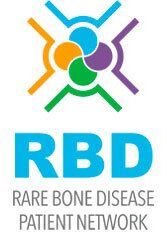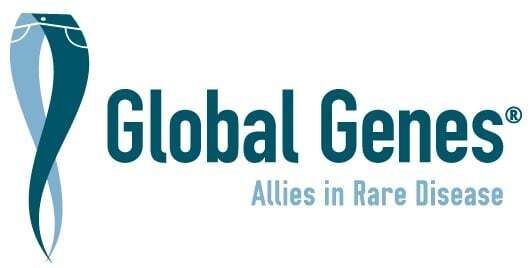Jana K. Sheets, Foundation Founder
I have lymphangiomatosis.
I was 6 when I broke my leg while playing with friends in the neighborhood. It was an accidental kick and if it had been anyone else’s leg it would not have broken. We didn’t know was that my bones were different. I was taken to the ER. With a scan, they found a hole in the bone where the break occurred. They immediately thought it was cancer, but that was very quickly and very thankfully ruled out. I say thankfully because no one would want to have cancer, but sometimes today, I wish cancer had been the diagnosis. At least it could have been treated, doctors would be interested in the diagnosis and actively researching it. They assumed it was fibrous dysplasia and told my parents it wasn’t a cause for concern. I was put in a cast and sent home – with no follow up.
Two years later I broke my leg again in the same spot when I fell off a jungle gym practicing gymnastics. When they x-rayed the area, they found the hole and compared it with the previous x-rays and found it had grown. This raised a red flag, so they did a full skeletal survey and found holes in practically every bone of my skeleton. They varied in size, but it was obvious there was something very wrong. The doctors, caring for me, didn't know what it was and were not equipped to diagnose something so rare. I was sent to an orthopedic specialist and my activities were restricted to prevent me from falling and breaking something. This meant – no running, no gym class, no sports, no bikes, and no more gymnastics. Despite our attempt to keep me from fractures, I began breaking and cracking ribs on a regular basis. Coughing, hugging, sleeping on the floor at a slumber party – these were activities where I had to be careful.
The local doctors, that were following me, felt that I needed to be under the care of a team at a university hospital. They no longer believed the first diagnosis was correct and felt that I would get better care, having something rare, at the university hospital. At this point, all of the holes were growing, and new ones were developing. My new doctor decided to biopsy one of the cysts (as they called them). It was inconclusive – because the cyst was filled with lymphatic fluid and nothing else. So he then biopsied 2 other bones with the same results. It clued them in to the lymphatic system, but still nothing definitive was decided upon. He began reaching out to medical experts in orthopedic oncology. Over the years it was thought I had fibrous dysplasia, eosinophilic granuloma, lymphangiomatosis, hemangiomatosis, or Gorham’s disease. Around the 5th grade, I had a test that would confirm my diagnosis of lymphangiomatosis called a lymphangiogram.
At the time we thought it was just a bone disease. My doctor told me there were no treatments, but he hoped the cysts would stop growing when I stopped growing.
When I was a freshman in high school, I went to my bone doctor for a broken rib. When they x-rayed my ribs, they found a collection of fluid around my right lung. I was sent immediately to a thoracic surgeon so they could remove the fluid. I was oblivious to the gravity of what was happening or where this would eventually lead – I thought I only had a bone disease. A week later I went back to the doctor that had tapped my lung and they x-rayed my chest. The fluid collection (called a chylothorax) had returned, and it was worse. I was 14, so I don’t remember much about what I thought or asked. I then knew it was the disease – the disease I thought was just a bone disease – was now in my lungs too. They put me in the hospital, and over a period of 2 months I had several procedures, some experimental surgery and life-threatening, it finally stopped.
I went through the rest of high school, my senior year, and put the freshman year episode behind me. I never returned to the lung doctor, and my breathing felt fine. I continued with my annual visits to the bone doctor. During my senior year, I slipped on a stair and broke my arm. I had a very large hole that I would eventually end up having stabilized with a metal rod and plate a few years later. There was some good news amongst it all, I’d stopped growing and the holes stopped their progression.
I graduated high school, attended college for a few years, and then moved around a bit. I was in another period of “remission” - a time when I had no active problems. I moved to Florida in my early 20’s, worked as a retail manager for a clothing store, and lived a very “normal” life. I realized one day that my breathing was not quite as good so went to the doctor, and we found that I’d developed a fluid collection on my left lung. This time I knew what to expect. I was admitted to the hospital, and I was very lucky that the procedure was successful on the first try. I’ve since learned that many patients that experience this symptom don’t survive. I survived it twice.
It was after this procedure that my lungs slowly began to fail. I don’t know how quickly it happened or why. Unless a person is an athlete, a runner, or someone that works out hard, they will not notice that their breathing isn’t as good until they’ve lost a good amount of their lung function. That is what happened to me. Since I was never allowed to be physically active because of my bones, the only time I would realize I was out of breath was when we’d walk up to the beach and I thought I was just out of shape. In addition, I was not seeing a pulmonary specialist on a regular basis to monitor my lungs. By the time I was 28 – after a series of symptoms and events - I learned that my lungs were diseased beyond repair from the lymphangiomatosis and that I would need a transplant to live. I chose Duke because of their record – they do more transplants than the other centers and are known for taking rare cases. We didn’t know if they would take me though because they had never and knew no other center that had ever performed a surgery on someone like me.
There were many obstacles though – my ribs were an issue as they had all fractured at one point and would likely fracture again during the procedure. I had additional issues relating to my disease – lymphatic fluid in by abdominal cavity.
We relocated to North Carolina in February 2004, and I got my new lungs on May 11th. It was a really long and difficult surgery, I’m told, but I came through it. I had a terrible and long recovery, but after 4 months I was released from the hospital. I was still on oxygen and my lung function was not much more than it was before the surgery. They hoped I would eventually not need the O2, but I’ve never came off.
Jana lived nearly six years after her transplant. She dedicated those years to building the Lymphangiomatosis & Gorham’s Disease Alliance so others suffering from these diseases could find and support one another while searching for doctors who had treated other cases and advocating for research.
For more than twenty years, Jana never knew another person with lymphangiomatosis or Gorham’s disease. Through the Alliance she met dozens of others, many of them children afflicted with the diseases and their parents. She spent the last years of her life building a community that continues to grow and carry on her work.
In May of 2009, Jana and her husband were advised to enter hospice care as there was nothing more the doctors could do for her. Feeling she had more time, Jana declined. Then in October 2009, Jana wrote to a friend whose daughter died from lymphangiomatosis in September: “I have some not so good news on my own front. I think you know my health has been deteriorating for a while now…Tuesday morning I woke up feeling especially bad. O2 sats in the 80’s sometimes lower. I then spiked a high fever of 102. I thought I was getting the flu – we’re not sure but I’m very congested and lungs are wet…I do not want to die in the hospital…we immediately called for hospice – I feel it’s time or getting very close to it. I…am hoping and praying the infection goes away, and I can make it through the holidays…I may be seeing your little girl soon – I feel a little less scared knowing there’s someone up there I know.”
Jana died January 6, 2010, two weeks after Christmas, at home surrounded by her family. She was 35 years old.










